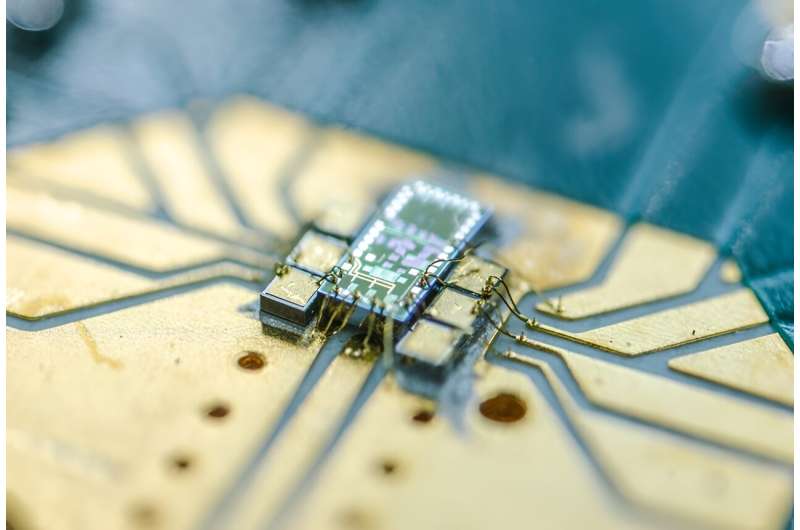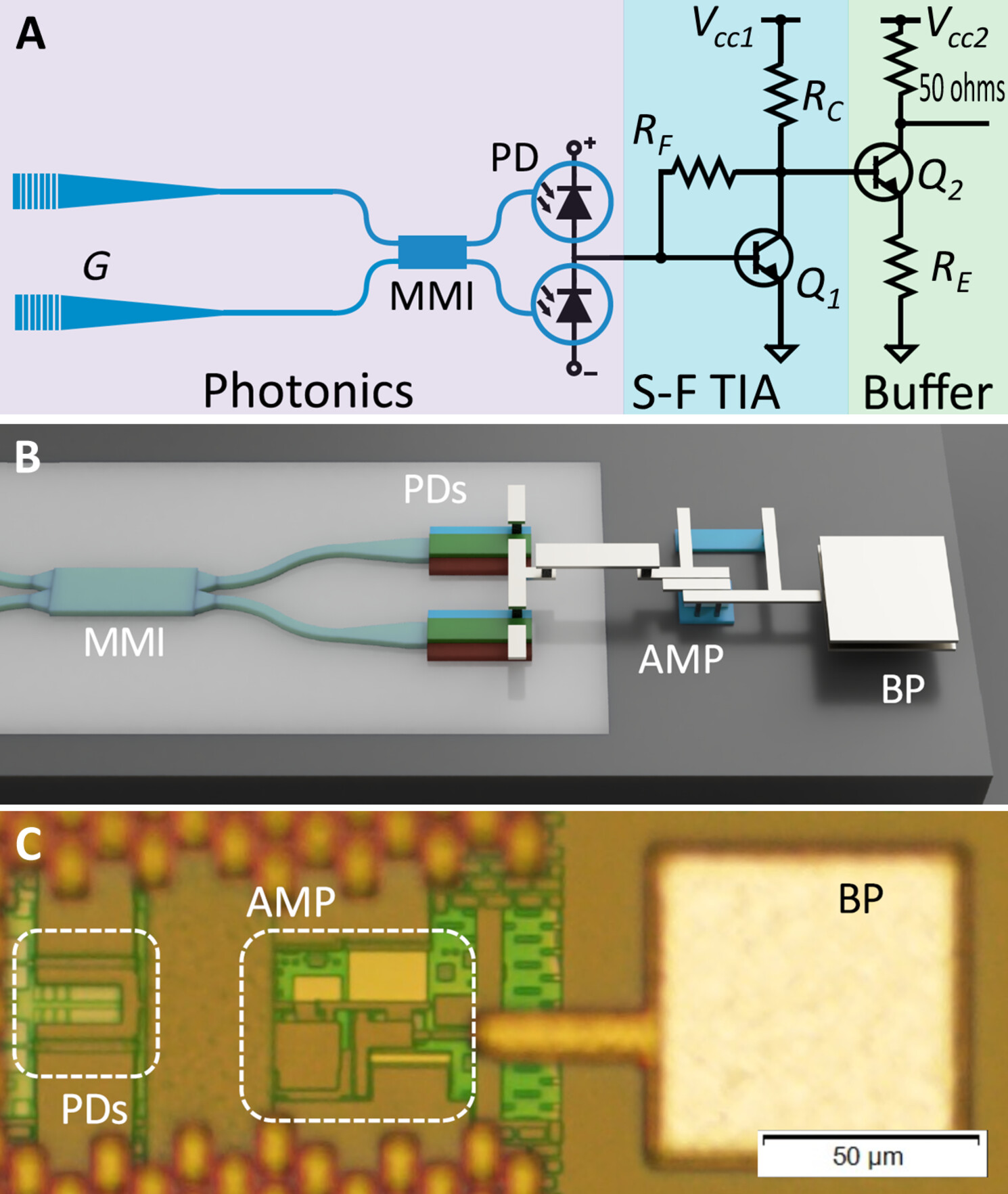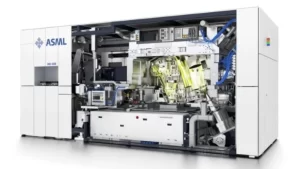Introduction
In a groundbreaking development, researchers at the University of Bristol have achieved a significant milestone in quantum technology by integrating the world’s smallest quantum light detector onto a silicon chip. This breakthrough, detailed in the paper “A Bi-CMOS electronic photonic integrated circuit quantum light detector” published in Science Advances, represents a pivotal step towards realizing the potential of quantum technologies.

Follow us on LinkedIn for everything around Semiconductors & AI
The Parallel with Transistor Miniaturization
The miniaturization of transistors in the 1960s catalyzed the information age, making it possible to develop powerful, yet affordable, micro-chips.
This enabled the proliferation of personal computers and, eventually, the internet, revolutionizing communication, computation, and numerous other fields.
Today, the integration of a quantum light detector onto a silicon chip marks a similar transformative moment, ushering in a new era of quantum technologies.
Read More: Reddit Joins the AI Race: OpenAI Partnership Shakes Up Online Communities – techovedas
The Breakthrough at University of Bristol
For the first time, academics at the University of Bristol have demonstrated the integration of a quantum light detector—smaller than a human hair—onto a silicon chip.
World’s smallest quantum light detector occupies a mere 80 micrometers by 220 micrometers on the chip, highlighting its incredibly compact size.
This miniaturization is crucial for the future of high-speed quantum communications and optical quantum computing.
“These types of detectors are called homodyne detectors, and they pop up everywhere in applications across quantum optics, “They operate at room temperature, and you can use them for quantum communications, in incredibly sensitive sensors—like state-of-the-art gravitational wave detectors—and there are designs of quantum computers that would use these detectors.”
~ Professor Jonathan Matthews, who led the research and is Director of the Quantum Engineering Technology Labs.
Read More: Cloud AI Gets a Boost: Ampere & Qualcomm Partner on Powerful, Eco-Friendly Chips – techovedas
Why Size and Speed Matter
The small size of the detector enables fast operation, which is essential for high-speed quantum communications and the efficient functioning of optical quantum computers.
The ability to manufacture such high-performance electronics and photonics at scale is fundamental to advancing next-generation information technologies.
Researchers worldwide are tackling the challenge of developing quantum technologies in existing commercial facilities. This effort is crucial for the widespread adoption of quantum computing.
Quantum computers require vast numbers of components to function effectively. Achieving high-performance quantum hardware at scale is crucial to building these complex machines.
The University of Bristol’s demonstration of a compact quantum light detector is a significant step in this direction.

Credit: University of Bristol
Read More: Why Warren Buffett Thinks AI Scamming Is The Next Big Industry? – techovedas
Applications of the Quantum Light Detector
These tiny detectors, known as homodyne detectors, are versatile tools in quantum optics. They operate at room temperature and are essential for various applications, including:
- Quantum Communications: Enabling secure, high-speed communication channels.
- Sensitive Sensors: Used in state-of-the-art gravitational wave detectors and other highly sensitive instruments.
- Quantum Computing: Integral to designs of certain types of quantum computers.
Professor Jonathan Matthews, Director of the Quantum Engineering Technology Labs, led the research. He emphasizes the broad utility of these detectors. They operate at room temperature and are applicable across various fields. This makes them highly valuable for advancing quantum technology.
Read More: AI Boom in China: Why Aren’t Clouds Taking Off? – techovedas
The Journey to Integration
In 2021, the Bristol team demonstrated that linking a photonics chip with a separate electronics chip could increase the speed of quantum light detectors.
With their latest innovation—a single electronic-photonic integrated chip—they have further enhanced speed by a factor of 10 while reducing the footprint by a factor of 50.
This significant improvement highlights the team’s continuous efforts to advance the technology.
Read More: GPT-4o: 12 Mind-Blowing Use Cases That Change How We Interact with AI – techovedas
Sensitivity and Quantum Noise
Despite their small size and fast operation, these detectors remain highly sensitive. Dr. Giacomo Ferranti, one of the authors, explains the importance of sensitivity in measuring quantum light.
Quantum mechanics introduces a fundamental level of noise in optical systems, known as quantum noise.
The behavior of this noise provides critical information about the type of quantum light in the system, determining the sensitivity of optical sensors and enabling the mathematical reconstruction of quantum states.
Ensuring that the detector’s reduced size and increased speed do not compromise its sensitivity was a key aspect of the study.
The researchers successfully demonstrated that the detector retains its ability to measure quantum states accurately.
Read More: Japan Pumps $740 Million into AI Race, Teams Up With NVIDIA – techovedas
The Road Ahead
While this breakthrough is a significant step forward, there is still work to be done. The efficiency of the new detector needs improvement, and it must be tested in various applications.
Professor Matthews highlights the importance of scalable fabrication of quantum hardware.
The team built the detector using a commercially accessible foundry to facilitate broader applications, emphasizing the need for the community to address the challenges of scalable quantum technology fabrication.
Read the paper here
Conclusion
The integration of the world’s smallest quantum light detector onto a silicon chip by the University of Bristol researchers is a landmark achievement.
This advancement brings us closer to the age of quantum technologies, with profound implications for communication, computation, and sensing.
As the research community continues to tackle the challenges of scalable quantum hardware fabrication, the potential benefits and impact of quantum technology will become increasingly accessible and transformative.








